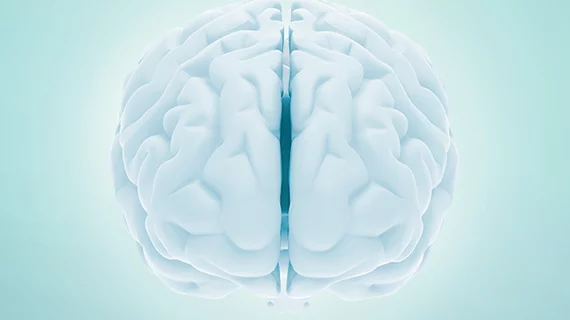AI helps ID schizophrenia through brain imaging
Researchers have identified an approach for more accurately diagnosing schizophrenia using AI, bringing some objectivity to the field of neurodevelopmental disorder diagnosis, according to a study published in the May edition of Artificial Intelligence in Medicine.
Despite being discovered as early as 1986, the underlying etiology of schizophrenia remains unclear 123 years later, co-authors Hongliang Zou and Jian Yang, both of Nanjing University of Science and Technology in Nanjing, China, said. Typical diagnosis involves a series of physician-led interviews that scrutinize a patient’s behaviors and symptoms, but that method is subjective.
Recently, researchers have been using resting-state functional magnetic resonance imaging (fMRI) to capture and evaluate regional structures in the brain and measure functional connectivity (FC). Studies have found the connection between brain regions is time-varying—something that could enhance scientists’ understanding of what normal cognition looks like versus alterations resulting from neurological disorders—but sliding window-based dynamic FC (DFC), the conventional method for analyzing those connections, has its shortcomings.
“DFC analysis has several drawbacks, including arbitrary choice of window length, inaccurate descriptor of FC and the fact that many spurious connections were included in the fully-connected networks due to noise,” Zou and Yang wrote. “This study aims to develop an effective dynamic thresholding brain networks method to diagnose schizophrenia.”
The pair proposed a time-varying window length DFC method based on a dynamic time warping algorithm to construct functional networks within the brain and identify schizophrenia more decisively. To minimize the influence of false connections caused by noise, Zou and Yang also applied AI methods like orthogonal minimum spanning tree to generate DFC networks.
The authors validated their method with a dataset of 56 schizophrenic patients and 74 healthy controls. They achieved a classification accuracy of 0.8077 using support vector machine, finding their time-varying window length dynamic thresholding FC approach outperformed “several state-of-the-art approaches” that, at their best, reached an accuracy of 0.7538.
Zou and Yang’s method yielded a sensitivity of 0.6964 and a specificity of 0.8919—2.57% and 6.76% higher, respectively, than competing methods. It also achieved an area under the curve (AUC) of 0.8509 compared to other methods’ AUC of 0.8333.
“Promising results were achieved, indicating the good diagnostic potential of DFC in schizophrenia,” the authors wrote. “In addition, we found that the connections among frontal, parietal and limbic areas play a key role in schizophrenia diagnosis, which coincides well with the well-known pathological region of cognitive processing in patients with schizophrenia.
“The results suggest that our approach would be a promising tool for computer aided-diagnosis of schizophrenia.”

